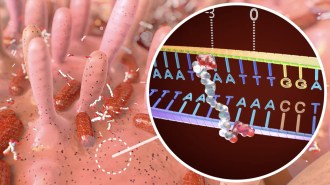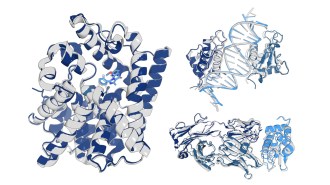- More than 2 years ago
From Washington, D.C., at a meeting of the American Chemical Society
Hydrogen production remains a major stumbling block on the road to the hydrogen economy, a much-touted successor to the current oil-based economy. Today, hydrogen supplies are derived largely from fossil fuels, such as oil, via processes that produce carbon dioxide. Yet it’s this global-warming gas that a switch to hydrogen is supposed to curtail. Hydrogen can be split from the oxygen in water using electricity, but that process requires a great deal of energy.
Mahdi Abu-Omar of Purdue University in West Lafayette, Ind., says that he and his team weren’t looking to produce hydrogen in their fundamental studies of a catalyst made of the metal rhenium. In one set of experiments with a solution of water and an organic liquid called organosilane, however, hydrogen started to bubble up from the fluid soon after the researchers added a small piece of rhenium to the mixture. The solution was at room temperature and of neutral pH, conditions that normally wouldn’t have produced hydrogen.
“It was truly a serendipitous discovery,” says Abu-Omar.
After performing the reaction, the researchers studied how the reaction works. They found that the water’s oxygen atom bonds to the silicon atom of an organosilane molecule, leaving behind a hydrogen molecule composed of one hydrogen atom from water and another from the organosilane. The hydrogen yield is proportional to the water used. In essence, Abu-Omar’s group has found a new means of splitting water.
There are many hurdles on the way to making this hydrogen-production process practical, Abu-Omar stresses. For one thing, researchers will have to determine whether the reaction works on a large scale. And organosilane is expensive enough that the economics of the process would be prohibitive.






